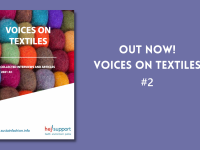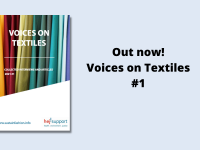Assessing the Sustainability of Viscose

Viscose, also known as rayon and originally produced in the late nineteenth and early twentieth centuries, is claimed to be the third most commonly used textile.1 Initially, it was promoted as an alternative to silk because of its luster, softness and more reasonable price point.1 It is a highly versatile semi-synthetic fiber and is used for a variety of purposes, from clothing and feminine hygiene products to tire cords, due to its numerous desirable properties which include high absorbency, breathability and color retention.2
Viscose is derived from cellulose or plant-based pulp from sources such as trees, most commonly beech, eucalyptus and pine, as well as from other plant sources like soy, bamboo and sugar cane.3,4
Although it is a plant-based fiber, the manufacturing process of viscose is heavily dependent on the use of chemicals such as ammonia, acetone, caustic soda and sulphuric acid.2,3 The environmental impact of viscose production is largely dependent on the source material, as wood-based fibers derived from unsustainable deforestation practices carry a much larger footprint than those sourced from well-managed forests.5 It is estimated that less than 30% of viscose production is sustainably sourced.1
In addition to the adverse impacts of deforestation, the viscose production process often leads to air emissions of carbon disulfide, hydrogen sulfide, sulfur and nitrous oxides.1 This process can consequentially result in water emissions, which can produce toxic effects to not only aquatic wildlife and ecosystems but also contaminate groundwater sources.1 Additionally, viscose production is also responsible for high water usage and energy consumption.1
Unfortunately, the negative environmental impacts go beyond its production. Although the base materials for viscose are plant-based, it has very slow biodegradability properties and has been estimated to take between 20-200 years for total degradation.3
On the positive side, more environmentally-friendly alternatives to viscose exist, which are sustainably sourced and less reliant on harsh chemicals.1
Style Considered. (n.d.). Is Viscose A Sustainable Fabric? (An Eco-Textile Guide). Retrieved from: https://www.styleconsidered.com/is-viscose-a-sustainable-fabric/
References
- The Council of Fashion Designers of America, Inc. (n.d.). Rayon (Viscose). Retrieved from: https://cfda.com/resources/materials/detail/rayon-viscose
- Synzenbe. (2019, April). Is viscose sustainable? Fibre2Fashion. Retrieved from: https://www.fibre2fashion.com/industry-article/8317/is-viscose-sustainable
- Anna-Spohie. (n.d.). Is viscose a sustainable fabric? (An eco-textile guide). Style Considered. Retrieved from: https://www.styleconsidered.com/is-viscose-a-sustainable-fabric/
- Robertson, L. (2020, March 9). Material guide: Is viscose really better for the environment? Good On You. Retrieved from: https://goodonyou.eco/material-guide-viscose-really-better-environment/
- Friedman, A. (2017, December 1). How environmentally friendly is viscose? A new study sheds light. Sourcing Journal. Retrieved from: https://sourcingjournal.com/topics/raw-materials/viscose-fiber-environmental-performance-75439/






